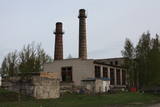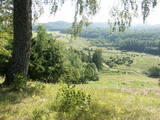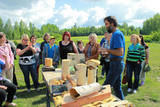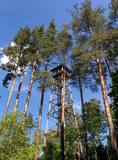| Нo | Название | Описание |
|---|---|---|
|
The biggest sea island in Estonia. In translation - "Land of The Islands". A bridge, where cyclists can drive connects Saaremaa island to Muhu island . |
||
|
Familienbetrieb Hiiu Vill ist einer der wenigsten Wollebearbeitung-Unternehmen in Estland, wo zum Bearbeiten der Schafwolle die polnische Maschienen (Krempelwolf, Spinnmaschiene etc.) aus der 19. Jh. benutzt wird. Gäste sind hier herzlich willkommen. Im Sommer gibt es draussen ein Cafe und ganzjährig besteht die Möglichkeit Wollesachen einzukaufen. |
||
|
Vienu kilometru garā lokveida taka, kas ved pa lielāku nacionālā parka meža masīvu, uzskatāmi attēlo Žemaitijas augstienes un tuvākās apkārtnes reljefa veidošanās vēsturi. No takas augstākā punkta – Mikitai kalna, kas ir sens pagānu upurkalns, paveras (ainaviska stiga) tālākas apkārtnes skats. Kā takas interesantākie apskates objekti ir jāmin teikām apvītais akmens ar Velna pēdu un ar akmeņiem izliktas akas paliekas. |
||
|
Котельная военного порта годами использовалась для обеспечения отопления в городе. Объект принадлежит Лиепайским теплосетям, заброшен, территория не охраняется.
|
||
|
Лапмежциемский народный дом –
построен в 1957 г. В настоящее время здесь
находится волостное самоуправление и
библиотека. В народном доме проводятся
различные культурные мероприятия.
|
||
|
Корчма находится в историческом центре Лимбажи, на площади Карля Блайманя. Латышская кухня: Холодный суп, жареная треска или камбала, мясной – грибной горшочек, блины с начинкой, слойка из черного хлеба, клубничный суп. Особое блюдо: «Свадебный карбонад» (из свинины). |
||
|
Частная, созданная под открытым небом, коллекция старинных орудий труда, предметов быта и техники, начало которой положено в 2002 году. Сейчас в экспозицию входит более 5000 всевозможных культурно-исторических предметов и художественный сад, который простирается на площади более 2 га и включающий бесчисленные композиции роскошных цветов, фонтаны, восточный мостик для медитаций, пруды, перголу, беседки. Расположена в 1 км от Лаздукалнса. |
||
|
From the tower of St Simon’s Lutheran Church, you can see the central part of Valmiera and the banks of the Gauja River. During clear weather, you can see Zilaiskalns Hill. The church contains some cultural and historical treasures, as well as one of Latvia’s most resonant pipe organs.
|
||
|
Находится на главной пешеходной улице города. Пекут пирожки с салом, ватрушки, булочки с корицей, крендели и торты. Предлагают аренду стильных велосипедов vintage. |
||
|
Atrodas t.s. Baznīcu kalnā - Tautas ielā 2. Šo uzskata par vienu no krāšņākajiem Latvijas pareizticīgo dievnamiem, kura ārējo veidolu izrotā daudzo torņu kupoli. Tā celta 1905. g. kā Dinaburgas garnizona baznīca ar daudziem nozīmīgiem mākslas pieminekļiem interjerā, t.sk. 19. gs. ikonām. Dievnams ir ikdienā atvērts un apskatāms no iekšpuses. |
||
|
Atrodas Amatas ielejas augstajā krastā, autoceļa (A 2) Rīga – Veclaicene malā. Plašs ēdienu klāsts, lielas porcijas, iecienīta tālbraucēju šoferu maltītes ieturēšanas vieta. |
||
|
This territory was established so as to preserve the natural and cultural landscape of the most distinct part of the Alūksne highlands – a landscape which is made up of the highest hillocks in the area – Dēliņkalns Hill, Dieva Hill, Saules Hill, the Drusku castle hill, and the Kornetu-Peļļu sub-glacial river bed (one of the most significant terrain differences in Latvia). There are lakes, too – Lake Pilskalns, Lake Dzērve, Lake Ieva, Lake Raipals, etc. There are also significant biotopes – hillside and gully forests, various kinds of swamps and meadows, damp forests, etc., all with their own species of flora and fauna. There are nature trails and tracks for cross-country and downhill skiing in the area. There are three restricted natural areas in the territory – Korneti-Peļļi, the Avotu forest, and Dēliņkalns Hill. |
||
|
Onions, fish, villages that stretch out for several kilometres where the buildings are lined along the main street, ornate Old Believers' churches, small harbours with fishing boats and wooden houses, each painted in a different colour! Cafés, shops and a view of Lake Peipus, which looks more like a sea than a lake. This could be the description of this tour. This tour is a very interesting part of the Forest Trail, which will give you an opportunity to see and enjoy the Lake Peipsi region, the culture and lifestyle of local people as well as the nature. The tour will start in Tartu – Estonia’s second biggest city. You will go by bus from Tartu to Varnja where you will start to hike. During the tour you can visit Kostja’s onion farm, where the host welcomes guests and presents onion cultivation. It is also worth visiting the Chicory Museum in Kolkja to get acquainted with the history of chicory cultivation in row villages near Lake Peipus. You will also see Alatskivi Castle. In Avinurme we suggest visiting the Avinurme wooden handicraft centre and get acquainted with the local woodcraft, spend quality time in woodworking workshops and taste or even prepare yourself a selection of Estonian traditional foods. At the end of the tour you will return to Tartu by bus. |
||
|
Хозяйство Юмари находится недалеко от Валпене, где Кришьянис Баронс завершил свое путешествие из Тербаты. Ферма, окруженная дремучими лесами, сохранилась с 1826 года, теперешний дом был построен в 1904 году. Здесь выращивает фрукты, ягоды (в том числе и голубику) и овощи. Желающие могут осмотреть усадьбу, ознакомиться с методами органического земледелия, попробовать травяной чай и деревенские блюда, а также осмотреть большой сад, где произрастают фруктовые деревья, ягодные кусты и овощи. Хозяйка готовит лекарственные подушечки и тканые закладки. Юмари также входит в число достопримечательностей велосипедных маршрутов региона Дундаги. |
||
|
Tāšu meistars Jurijs Ivanovs ar lielu centību un degsmi pēc seniem paraugiem cenšas atjaunot labākās Zilupes novada tāšu apstrādes tradīcijas. Top novadam raksturīgi autentiski tāšu trauki ķiploku, putraimu, saldumu, sāls uzglabāšanai, paliktnīši kafijas krūzei vai pannai. Īsts meistarstiķis ir darbarīku rokturu izgatavošana. Darbnīcā varēsiet izgatavot tāšu glezniņu, tāšu tauri, uzrakstīt īpašu vēstuli kādam ļoti mīļam cilvēkam. |
||
|
Organically certified farm. Produces greens, vegetables, micro-greens, vegetables and berry powder (gauze, balanda, dandelion, nettle, driven). Grown all year round. Offers product delivery in Riga, Valmiera, Cesis and Sigulda. |
||
|
Uzcelts apkaimes augstākajā vietā – Ančupānu meža kalnā, kuru vietējie dēvē par „Bāku”. No 26 m augstā torņa redzama ļoti plaša panorāma ar Rēzeknes pilsētas namiem, baznīcu torņiem un apkaimes mežu masīviem, kas mijas ar lauksaimniecībā izmantojamām zemēm. Blakus tornim – atpūtas vieta. |
||
|
Хозяйство «Лациши» находится в Галгауской волости, на юго-западе от Гулбене. Специализация хозяйства, одного из крупнейших в северо-восточной части Видземе – зерновые (577 га), рапс (295 га) и семеноводство разных трав. Второе направления деятельности хозяйства – это разведение крупного рогатого скота молочной породы (около 100 коров), мясной породы и молодняка. Создано интересное помещение для обсуждений и презентаций, объединенное с коровником (за работой в коровнике можно наблюдать через большие оконные стекла). Активно включаются в освоение проектов ЕС. По предворительной договоренности возможен осмотр хозяйства и обмен опытом. |
||
|
Кафе находится на первом этаже в гостевом доме «Зитари» в городе Рое, на обочине дороги, в 500 м от моря. |
||
|
"Līdumkalni" atrodas Ķurbē -Kurzemes ziemeļrietumu daļā, starp Dundagas mežiem un Ķurbes lielo silu, zaļu pakalnu vidū, 15 km no jūras un ne pārāk tālu no debesīm. Šeit laiks rit lēni. Tas nevienu nesteidzina. Laika pietiek, lai vērotu Dieva radīto pasauli un ieskatītos Viņa bagātajā aptiekā. Laika pietiek lai iepazītos ar kristīgajām tradīcijām un dzīvesveidu, lai iegūtu praktisku lūgšanu un meditāciju pieredzi. Laika pietiks arī veselīgas maltītes pagatavošanai lauku virtuvē vai uz ugunskura un pašam savas gleznas uzgleznošanai gleznotājas darbnīcā. |
||
























